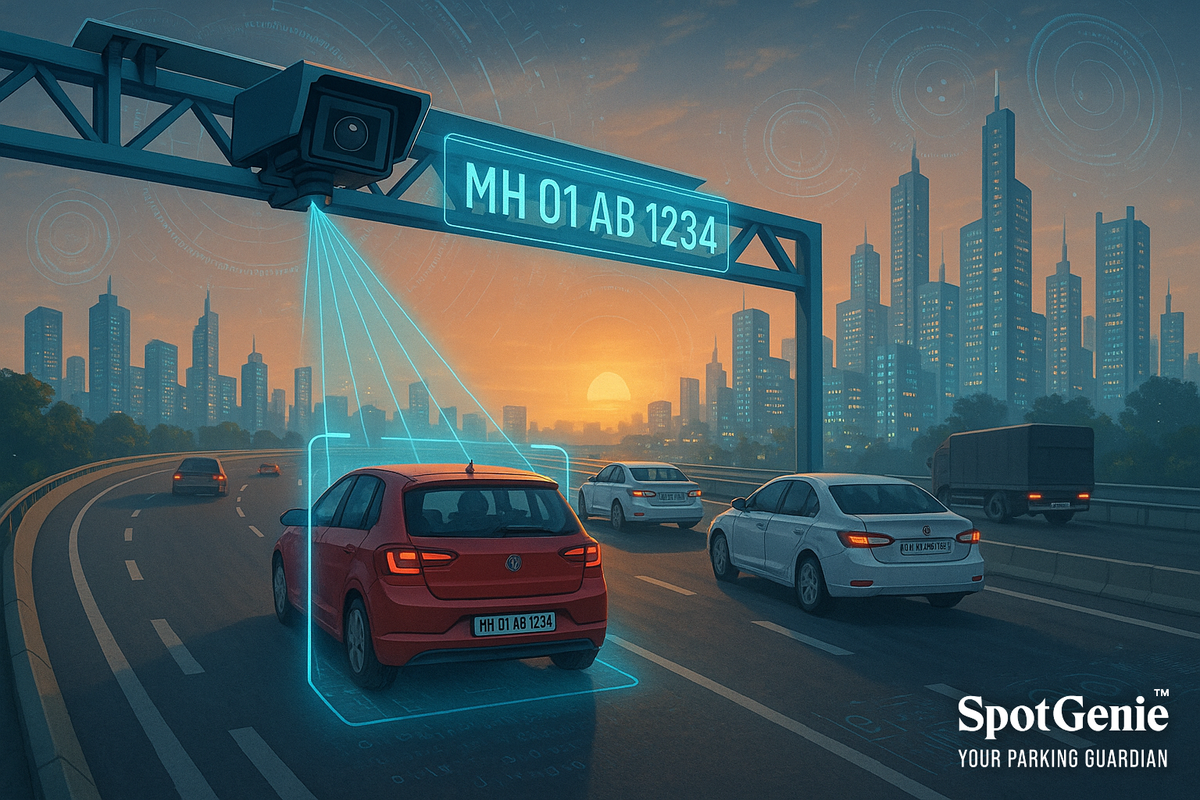ANPR Cameras India 2025: MoRTH’s Big Traffic Surveillance Leap
MoRTH mandates ANPR cameras nationwide for traffic enforcement. Learn what this means for Indian drivers, privacy, and urban mobility.

India’s Traffic Eyes: ANPR Cameras Go National Under MoRTH’s 2025 Push
SpotGenie's Opening Whisper
Oh India, your roads just got sharper eyes! The days of slipping past toll booths with blurry plates are over. Welcome to the age of traffic tech, where cameras don't just watch, they recognize. ANPR – that’s Automatic Number Plate Recognition – has officially entered the national chat, and it's not here to blink.
Headline:
In a landmark move, the Ministry of Road Transport & Highways (MoRTH) has greenlit the nationwide deployment of ANPR cameras across India's toll plazas, junctions, and enforcement zones. This isn't just another bureaucratic pilot. We're talking real rollouts, real tech, and real impact. Delhi, Pune, Hyderabad – the usual suspects – are already buzzing with high-resolution lenses. But now, MoRTH wants every state onboard, fast-tracking smart surveillance as part of India’s intelligent traffic management roadmap.
These cameras don’t just snap photos. They decode number plates in milliseconds, match them with the VAHAN vehicle database, cross-check FASTag logs, and identify defaulters on the fly. Expect this tech to become the backbone of toll collection, red-light enforcement, stolen vehicle alerts, and even traffic pattern analysis. In short, our roads are getting a digital nervous system.
What It Means for You
Let’s break it down. For the everyday driver, ANPR means shorter queues at toll plazas, reduced human intervention, and (ideally) fewer random traffic stops. It means if you're doing nothing wrong, you're probably good to go. But there's a flip side.
With machines taking the wheel on enforcement, concerns about privacy and errors creep in. What if your plate is misread? What if your look-alike person's car gets you fined? What if someone clones your plate? These aren’t sci-fi scenarios; they’re real questions being raised across cities where ANPR is already operational. And with no national data protection bill in place, citizens are right to ask: who's watching the watchers?
The Deeper Jam
Globally, ANPR isn’t new. The UK has used it for decades to monitor congestion zones and stolen vehicles. Singapore's smart intersections rely on it for urban flow. But in India, it represents something deeper — the merging of civic tech with everyday life. It’s part of a broader push to digitize mobility and reduce friction, aligning with Smart City goals and Urban20 (U20) commitments under the G20 umbrella.
It also raises policy-level debates. How do we balance innovation with individual rights? Can our enforcement systems ensure fairness in an automated world? And most importantly, how do we ensure that surveillance is always aligned with service, not just scrutiny?
SpotGenie’s Daily Gyaan
"If the road has memory, drive like you’re part of its conscience." — SpotGenie
SpotGenie:
SpotGenie isn’t here to play Big Brother. We’re here to play Better Brother. As ANPR zones expand, our maps update in real-time to show users where enforcement cameras exist. Not to dodge them, but to stay informed. You’ll get nudges if your number plate needs a clean-up or if your FASTag is misbehaving. Knowledge, after all, is civic power. And we’re here to hand you the reins.
Trending Regulations & Sections
- Motor Vehicles Act, 1988: Section 136A amended to include electronic monitoring
- Information Technology Act, 2000: Data collection and consent clauses under scrutiny
- MoRTH Guidelines (June 2025): States to submit compliance reports by Q3
City Focus:
Delhi has integrated over 3,500 ANPR cameras, mainly across Outer Ring Road and expressways. Pune recently installed 800+ units around tolls and industrial zones. Hyderabad leads with facial recognition integration, sparking debate. Meanwhile, Bengaluru is refining its pilot after discovering 17% error rates due to dirty plates and monsoon glare. Citizens are divided — some feel safer, others watched. But one thing’s certain: the change is rolling, lens first.
Voices from the Road
“The camera caught my number plate even when I was doing 90 kmph. Impressive. But who sees that data?” — Raghav, Pune
“If this stops bribery at junctions, I’m all for it. But they better get my car’s number right!” — Fatima, Delhi
Your Move, India
Don’t get caught off guard. Check if your city has rolled out ANPR zones. Make sure your number plate isn’t scratched, bent, or fancy-fonted. Keep your FASTag active and linked correctly. And use civic-tech tools like SpotGenie to stay one step ahead. The road may be watching, but so can you.
SpotGenie’s Sign Off
Until next time, dear driver, drive like your number plate is smiling for a selfie – clear, honest, and facing forward. SpotGenie out!
Follow us on:
🅾 Instagram |
ⓕ Facebook |
𝕏 X |
▶️ YouTube |
🟢 WhatsApp



